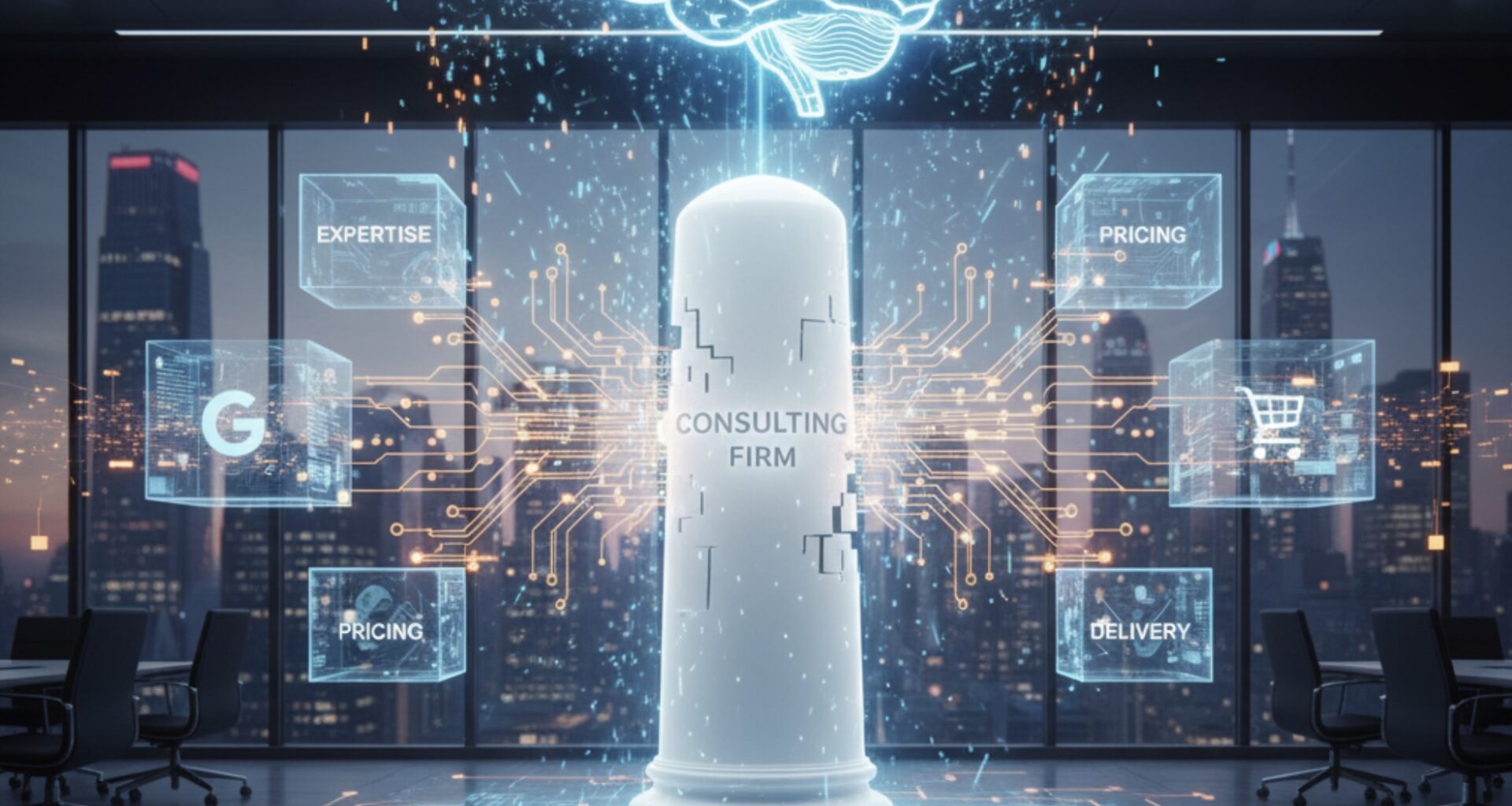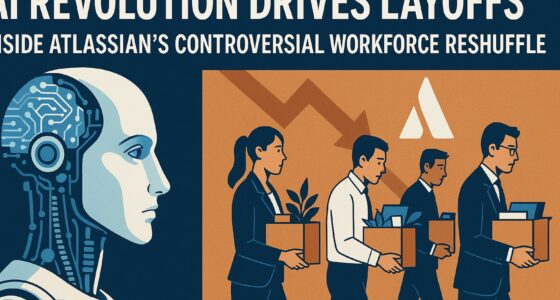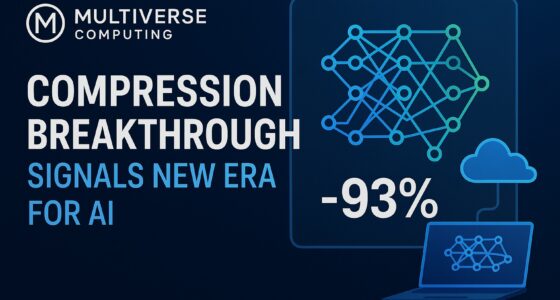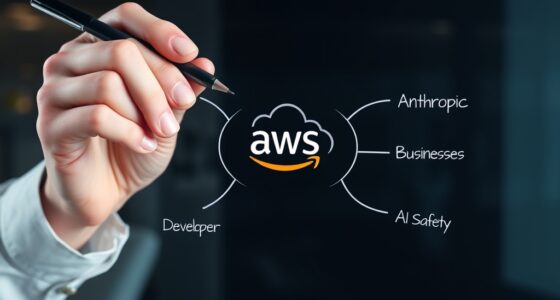By Thorsten Meyer | ThorstenMeyerAI.com | October 2025
Executive Summary
Accenture’s September 2025 restructuring announcement—that it will “exit” employees unable to reskill for AI roles—marks a structural reset for professional services. The consulting model, long built on human leverage, is being overtaken by an AI-first delivery system. Firms are redefining expertise, compressing project timelines, and replacing billable hours with value-based outcomes. The consulting pyramid is flattening into an AI‑powered pod.
The Collapse of the Traditional Pyramid
For decades, firms sold knowledge through a hierarchy: analysts gathered data, consultants synthesized insights, partners delivered advice. Generative AI breaks this model.
“Generative AI is collapsing the leverage model that consulting relied on.” — Thorsten Meyer, Post‑Labor Economist
AI now performs foundational research, benchmarking, and draft generation at near‑zero marginal cost. As a result:
- Information asymmetry—once the source of consulting’s power—erodes.
- Junior analyst layers shrink as firms automate research, modeling, and presentation design.
- Client expectations shift from effort to outcomes.
The human premium moves upmarket—to judgment, synthesis, and creative problem framing.
Pricing in an AI‑First Market
Traditional hourly billing loses relevance when AI reduces task time by 60–90%. Forward‑looking firms are migrating toward:
- Outcome‑based fees: Payment tied to measurable business value (e.g., churn reduction, cost optimization).
- AI + Expert Bundles: Access to proprietary copilots, internal GPTs, and domain‑tuned agents plus senior facilitation.
- Retainer models: Continuous improvement and governance subscriptions replacing one‑off engagements.
This evolution realigns incentives. Speed becomes a feature—not a discount.
Inside the New Delivery Stack
| Old Pyramid | AI‑Powered Pod |
|---|---|
| 1 Partner, 3 Managers, 10 Analysts | 3 Senior Experts + Internal GPT + Governance Engineer |
| Manual data synthesis | Automated knowledge retrieval + multi‑agent orchestration |
| Time‑based billing | Outcome‑based or value‑linked pricing |
| Weeks to produce deliverables | Hours or days to iterate insights |
| Knowledge hoarded in slides | Knowledge captured as reusable AI workflows |
The AI‑enabled firm builds around a five‑layer stack:
- Foundation: Secure data infrastructure and retrieval systems.
- Workbench: Domain‑tuned GPTs and prompt libraries for internal workflows.
- Applications: Specialized AI tools for legal, financial, or operational domains.
- Governance: Compliance, audit trails, and AI risk management.
- Human layer: Senior experts orchestrating agents and client relationships.
Talent: From Workforce to Skill Force
Accenture’s move illustrates an industry inflection point: upskill or exit. Future talent profiles emphasize:
- AI Orchestrators: Professionals fluent in multi‑agent workflows.
- Governance Engineers: Specialists ensuring ethical, compliant AI deployment.
- Strategic Synthesizers: Consultants who translate data into narrative and action.
The consulting workforce becomes a skill force, continually adapting to new AI systems.
Client Demands Are Evolving
Enterprise buyers now ask:
- “What’s your AI stack?” — expecting transparency on models, evals, and governance.
- “Show us measured impact.” — outcome data beats case studies.
- “Prove security.” — IP protection and privacy compliance are non‑negotiable.
RFPs increasingly request AI evaluation metrics and risk transparency—signaling maturity in how clients procure advisory work.
Margins and the New Economics
In the short term, AI compresses billable hours. Long term, margins can recover through:
- Productization: Turning repeatable work into reusable AI modules.
- Value alignment: Linking pricing directly to business outcomes.
- Operational leverage: Using automation to scale quality without scaling headcount.
The firms that adapt early will command premium margins by delivering verified, repeatable value.
Sidebar: The Consulting Firm Reimagined
From: Human‑heavy, time‑based, manually synthesized.
To: AI‑tooled, value‑based, continuously learning.
| Aspect | Legacy Firm | AI‑Native Firm |
| Core Product | Expertise | Decision Velocity |
| Asset | Human IP | Codified Agent Systems |
| Differentiator | Brand Reputation | Data + Model Governance |
| Growth Leverage | Hiring | Automation |
| Pricing Logic | Hours | Outcomes |
The Strategic Imperative
AI isn’t replacing consulting—it’s unbundling it. The firms that thrive will:
- Rebuild delivery around AI pods.
- Embed outcome pricing into every contract.
- Reskill continuously.
- Govern their AI like an enterprise asset.
- Productize insight workflows.
The next generation of consulting will not be measured by how many hours a firm can sell, but by how fast it can deliver decision velocity.
Callout Box: Outcome Pricing Checklist
- Define measurable client outcomes (e.g., cost savings, lead time, revenue impact).
- Quantify baseline metrics before engagement.
- Implement data access protocols for transparent measurement.
- Align internal incentives to client success.
- Reassess pricing quarterly as AI accelerates delivery.
Conclusion
AI is dismantling the traditional architecture of professional services. Consulting’s future belongs to those who view AI not as a threat—but as a partner. The winners will be the firms that merge human intelligence with algorithmic precision to create governed, repeatable, high‑velocity insight machines.
About the Author:
Thorsten Meyer is a post‑labor economist and founder of ThorstenMeyerAI.com, part of the StrongMocha News Group. He writes about the intersection of artificial intelligence, automation, and the transformation of human work.









